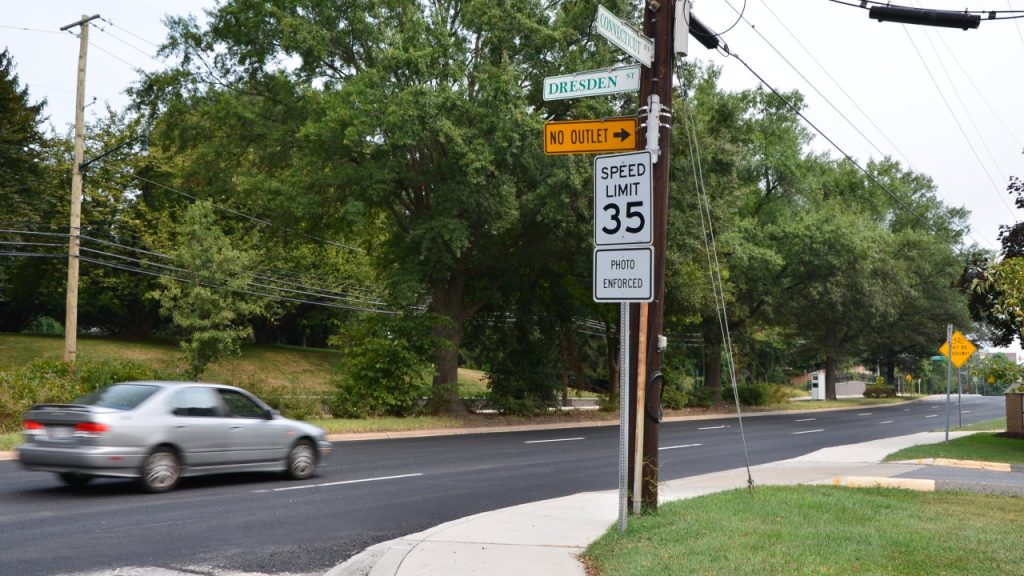jtstewartphoto/Getty Images
Getting a speeding ticket in Maryland has more consequences than just paying the fine, including potential points on your license and higher insurance rates. The average rate for a full coverage policy in Maryland rises from $2,793 before a ticket to $3,322 afterward—an increase of almost 19 percent. Fortunately, shopping around, applying discounts and reviewing your coverage options can help you save even with a ticket on your record.
How much is a speeding ticket in Maryland?
As is the case in many states, the cost of a speeding ticket in Maryland will vary based on factors like where you were driving and how fast you were going. The higher your speed, the more you’ll typically pay, and driving in a school or construction zone will further increase the fine.
According to the District Court of Maryland, typical fines are:
- Speeding by 1 to 9 mph: $80 and one point on your license
- Speeding by 10 to 19 mph: $90 and two points on your license
- Speeding by 20 to 29 mph: $160 and two points
- Speeding by 10 to 19 mph in a posted speed limit zone of 65 or 75 mph: $160 fine and two points
- Speeding by 20 to 29 mph in a posted speed limit zone of 65 or 75 mph: $290 fine and five points
- Speeding by 30 to 39 mph: $290 and five points
- Speeding by 40 mph or more: $530 and five points
Points on your license will not necessarily directly result in an increase on its own. Although you may wonder how to avoid points on a speeding ticket in Maryland, it’s unlikely that you will be able to avoid them unless you fight the ticket in court. That said, getting too many points in a two-year period usually brings additional penalties:
- 3 to 4 points: Warning letter
- 5 to 7 points: Mandatory Driver Improvement Program (DIP)
- 8 to 11 points: License suspension
- 12 or more points: License revocation
Excessive speeding could also see you charged with reckless driving, which can carry fines as high as $1,000.
The cheapest car insurance for Maryland drivers with a speeding ticket
If your premium increased significantly after a speeding ticket, you may want to consider shopping around. Every insurer uses its own proprietary method for determining rates, and some may weigh your driving record less heavily than others. You could start your search with the carriers below, which offer some of the cheapest average rates for Maryland drivers with speeding tickets.
| Company | Avg. full coverage rate before speeding ticket | Avg. full coverage rate after speeding ticket | % difference after speeding ticket |
| Nationwide | $1,456 | $1,981 | 36% |
| Erie | $1,973 | $2,114 | 7% |
| USAA | $2,142 | $2,631 | 23% |
| Geico | $2,184 | $2,500 | 14% |
| Penn National | $2,549 | $2,839 | 11% |
What to do after a speeding ticket in Maryland
If you get a speeding ticket, you should be prepared to pay more for car insurance, but just because you get a ticket doesn’t mean that you have to accept your current rate. There are still ways you can save on your car insurance.
Review your coverage selections
If you don’t want to switch car insurance companies, you may still be able to save by simply reviewing your coverage selections. More coverage generally means more financial protection and fewer out of pocket expenses if you do cause damage to your vehicle, but in some cases, you may be paying for coverage you no longer need. For example, if you now work from home and your partner has a car, you might no longer need rental car reimbursement coverage. It’s always a good idea to talk to your agent before dropping coverage types or levels to ensure you still have the financial protection you need based on your budget and risk tolerance.
Look for discounts
When you shop for insurance of any kind, one of the best ways to save money is through discounts. Insurers offer many discounts that you can likely qualify for, so be on the lookout for any that can help you save some money.
Common discounts include:
- Driving safety course: Enrolling in a defensive driving class or another approved driving safety course could make you eligible for a discount.
- Low mileage: If you don’t drive often, opting into a usage-based policy or asking about a low-mileage discount could potentially reduce your premium.
- Safety features: If your car has specific safety features, such as airbags or driving assistance, your insurer may offer a discount.
- Bundling: Combining your auto policy with other insurance, such as homeowners or renters coverage, could qualify you for discounts on both policies.
- Telematics programs: Telematics programs utilize technology to monitor driving behavior, and some insurance companies offer discounts based on factors like safe driving habits and low mileage.
Frequently asked questions
Methodology
Bankrate utilizes Quadrant Information Services to analyze January 2025 rates for all ZIP codes and carriers in all 50 states and Washington, D.C. Rates are weighted based on the population density in each geographic region. Quoted rates are based on a single, 40-year-old male and female driver with a clean driving record, good credit and the following full coverage limits:
- $100,000 bodily injury liability per person
- $300,000 bodily injury liability per accident
- $50,000 property damage liability per accident
- $100,000 uninsured motorist bodily injury per person
- $300,000 uninsured motorist bodily injury per accident
- $500 collision deductible
- $500 comprehensive deductible
To determine minimum coverage limits, Bankrate used minimum coverage that meets each state’s requirements. Our base profile drivers own a 2023 Toyota Camry, commute five days a week and drive 12,000 miles annually.
These are sample rates and should only be used for comparative purposes.
Incidents: Rates were calculated by evaluating our base profile with the following incidents applied: clean record (base) and single speeding ticket.
Read the full article here









